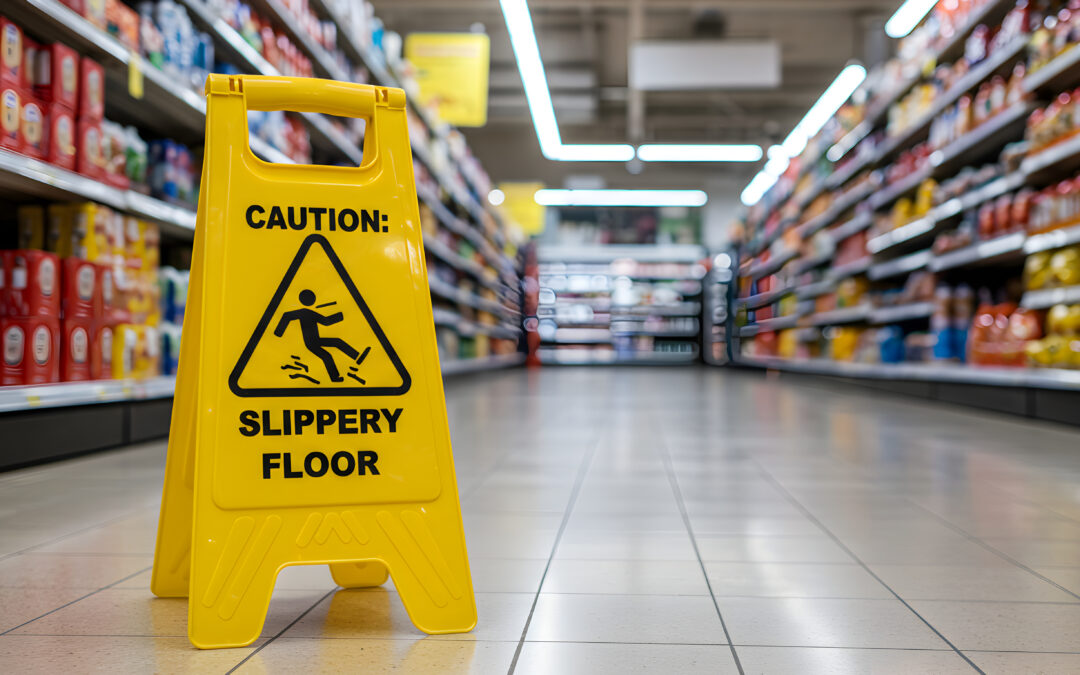Setareh Law
October 6, 2025
When you’re injured in a slip and fall accident caused by a spill at a California business, one of the most critical questions becomes: how long did that business have to clean up the hazard before they became legally responsible for your injuries? The answer to this question can make or break your premises liability case and determine whether you’re entitled to compensation.
Setareh Law understands the complexities of California premises liability law and has helped countless clients navigate spill-related injury cases. With over 60 years of combined experience and more than $250 million recovered for injured individuals, our legal team knows how to establish when a business should have known about a dangerous condition and taken action to prevent your accident.
What Does California Law Require for Spill Cleanup?
California doesn’t establish a specific timeframe that businesses must clean up spills before becoming liable for injuries. Instead, the state follows the legal principle of “reasonable care,” which means companies must act as a reasonable property owner would under similar circumstances.
The key factor isn’t necessarily how long the spill existed, but whether the business knew or should have reasonably known about the hazardous condition. That creates a more nuanced approach to determining liability, considering various factors beyond just the time elapsed.
When Do Businesses Have Actual Notice?
Businesses have “actual notice” when they directly observe a spill or when someone reports it to them. Once a business has actual notice of a spill, it must take prompt action to address the hazard. California courts generally expect businesses to begin cleanup efforts immediately upon discovering dangerous conditions.
The failure to act promptly after gaining actual notice significantly strengthens a premises liability case. However, proving actual notice can be challenging without witness testimony or surveillance footage showing when staff members became aware of the spill.
How Long Before Businesses Should Have Known About Spills?
The concept of “constructive notice” is often more relevant in spill cases than actual notice. Constructive notice means the business should have discovered the hazardous condition through reasonable inspection and maintenance practices.
Several factors help determine when a business should have been aware of a spill. These include:
- The type of business and expected foot traffic
- The location of the spill within the premises
- Regular cleaning and inspection schedules
- Whether the spill occurred in a high-traffic area
Grocery stores, restaurants, and retail establishments typically face higher standards because spills are more common and expected in these environments.
Common Timeframes for Different Types of Spills
While California law doesn’t specify exact timeframes, courts have established some general expectations. Food and beverage spills in restaurants typically require attention within 15-30 minutes, especially in dining areas. Grocery stores face similar expectations for their produce areas and aisles, where spills are commonly found.
The California Department of Public Health provides guidelines for commercial establishments that can influence reasonable care standards. Retail stores generally have 30 minutes to several hours, depending on the location and visibility of the spill.
What Factors Affect Liability Timing?
Several key factors influence how quickly a business becomes liable for injuries related to spills. The visibility of the spill plays a crucial role—obvious hazards in well-lit, high-traffic areas create liability faster than small spills in dimly lit corners.
Business policies and procedures also play a significant role. Companies with documented cleaning schedules and inspection protocols may face liability if they fail to follow their own standards. The type of substance spilled also affects expectations, with dangerous liquids like oils or cleaning chemicals requiring more urgent attention than water.
Evidence That Strengthens Your Case
Security camera footage showing how long the spill existed before your accident provides powerful proof. Witness statements from employees or customers who saw the spill can establish timelines, while maintenance logs and cleaning schedules demonstrate whether the business followed proper procedures.
Employee training records may reveal whether staff members knew how to handle spills appropriately. Slip and fall cases often depend on this type of detailed evidence to establish liability.
Retain Trusted Legal Representation for Your California Slip and Fall Injury Case
Understanding when California businesses become liable for spill-related injuries requires careful analysis. The timeline for cleanup varies based on numerous factors, but businesses generally must act promptly once they are aware or should be aware of hazardous conditions. Success in these cases often depends on gathering evidence quickly and understanding how premises liability law applies to your situation.
If you’ve been injured in a slip and fall accident caused by a spill at a California business, don’t let questions about liability timing prevent you from seeking the compensation you deserve. Call us at (310) 659-1826 or complete a contact form to schedule your free consultation with our experienced premises liability attorneys.


